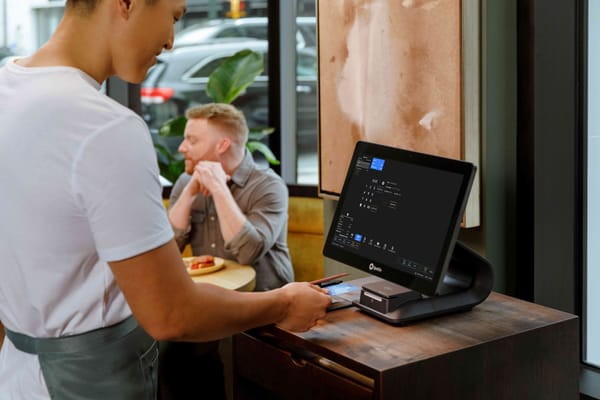Running a restaurant requires you to make a lot of decisions on the fly. When a distributor delivers the wrong order or the stovetop breaks down, you adapt and solve the problem. But when it comes to ensuring the long-term sustainability of your business, it can often feel like you’re navigating in the dark. This is particularly true when it comes to optimizing your hours of operation and staff scheduling.
Your operating hours are a key factor in your overhead rate (overhead rate = total fixed costs / total amount of hours open). Deciding whether to increase or decrease hours is a big decision that shouldn’t be made on a gut feeling. Thankfully, it’s easy to access qualitative and quantitative data to inform your decisions. Whether labor shortages are necessitating fewer hours, or you’re trying to determine the most profitable time for a Sunday brunch seating, here are 5 strategies to optimize your operating hours.
1. Conduct market research

There is no one-size-fits-all when it comes to operating a restaurant. Whether you’re in a college town, summer vacation spot, or city neighborhood buzzing with nightlife, checking out when other similar businesses operate is a good starting place. Look at your competitors’ menus and take note of when they’re open and when meal times start and end.
Operating hours aren’t just dependent on your location, which might necessitate longer hours during peak times (and hiring additional seasonal staff) and limited hours during the off-season. It’s also important to consider your restaurant concept. Offering everything at all times is not just time-intensive for the kitchen, but also expensive. Optimizing your business hours is about determining when you’re open as well as what menu items are available at different times. Tailoring your menu and service style to different shifts can help you make the most out of your food and beverage items and staff.
2. Check sales reports
An accurate, easily accessible restaurant reporting dashboard is your best friend when it comes to seeing your restaurant’s busiest shifts. It can be tempting to go off your gut and eyeball the line of people out the door or the number of occupied tables, but checking your sales reports will give you the clearest possible picture of your peaks and valleys.
View your sales by month, week, day, and hour to drill down into when you can expect the most guests. This data should inform your staffing, ordering, and perhaps your capacity to take online orders if you offer that option. Take note of your least busy times to further consider whether it’s worth it to maintain full operations. For example, if you have always kicked off the brunch shift at 10 am but your sales reports indicate that sales only start to spike at 11:30, you should adjust accordingly. Starting the brunch shift a little later can help you overlap with peak sales, but still give you enough time to wrap up and prepare for the dinner seating. Sometimes, you might want to consider closing earlier or not operating on certain days. This can be a more profitable option than operating with low volume.
“Right now, we're open less than 50% of what we were previously running. We did that on purpose, though. We could open seven days a week, but the business is not there yet. And we'd be throwing good money at bad money.” – Adam Snyder, Hat Trick Hospitality
Also monitor your sales during holidays, when other businesses might be closed or people are specifically seeking out your restaurant. Setting up special extended holiday hours is another way to catch more guests that you might otherwise miss.
3. Use sales & labor forecasting to determine ROI
With a clear picture of your sales and peak hours, you can drill into what your labor is costing you and start to determine the return on investment. When your labor management system integrates seamlessly into your POS, you can access the most accurate data on sales and labor without spending hours comparing spreadsheets in the back office. Track your daily sales, labor hours, and labor as a percentage of daily sales to ensure you’re staying under your established benchmarks.
4. Schedule staff according to your level of business
Ideally, you would create your optimized operating hours and then find staff to fill the open spots. But in a tough labor market, that might not always be the sequence of events. To prioritize employee retention, make sure that your anticipated peak shifts are adequately staffed. Creating a staff schedule that takes into account your peak times confirms you have enough team members to operate the restaurant during your desired hours, without sacrificing quality or the guest experience. It can also tell you when it’s time to hire more staff or when to release people early during slow shifts.
5. Talk to your guests

As with all aspects of the restaurant business, it’s important to consider the guest experience when optimizing your operating hours. This doesn’t have to mean increasing convenience by operating whenever your guests might want to drop by. Rather, your guests’ opinions are one more piece of data to consider, alongside staffing concerns and ROI. It can be helpful to ask your guests’ preferred time for brunch or whether they would partake in a weekday lunch service if you offered it. You can also use your guests as a sounding board if you’re considering shifting service style by making some operational shifts, such as using QR-code ordering only or partial service.
In the restaurant industry, change happens so fast that if you blink you’ll miss it. Adapting to these changes is key to sustaining your business in the long term. With accurate, easy-to-interpret sales and reporting data you can pivot your service or change hours of operation with the confidence you’re not losing out on any blockbuster sales. It’s not only beneficial to your bottom line—optimizing your hours can help ensure your staff and guests have a positive experience. That’s what your business is all about.












